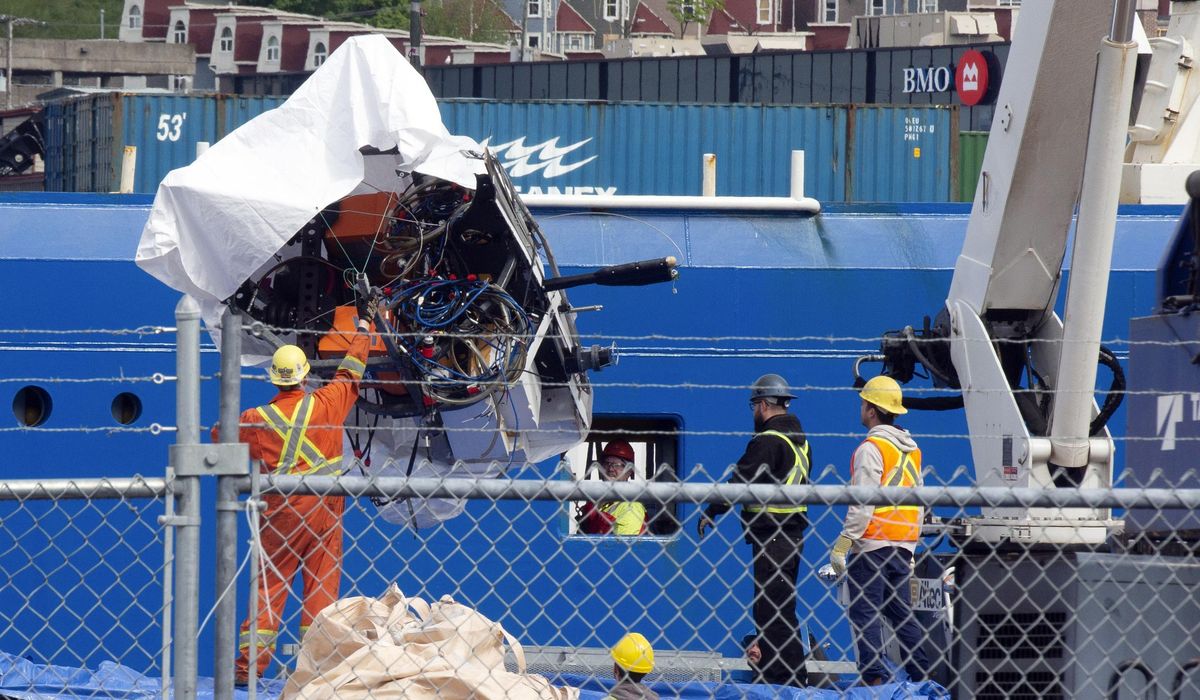


An implosion that killed all five people aboard a small submersible during an expedition to visit the Titanic wreckage site in June 2023 could have been prevented and was the result of design flaws, lax oversight and a toxic work culture that put the company’s finances over safety, according to a just-released U.S. Coast Guard report.
The Titan was owned by OceanGate, a company based in Everett, Washington, that provided crewed submersibles for research, exploration and tourism. The company’s co-founder, Stockton Rush, was among those aboard the doomed vessel.
“The two-year investigation has identified multiple contributing factors that led to this tragedy, providing valuable lessons learned to prevent a future occurrence,” said Jason Neubauer, chairman of the Coast Guard’s Marine Board of Investigation. “There is a need for stronger oversight and clear options for operators who are exploring new concepts outside the existing regulatory framework.”
The primary contributing factors were the inadequate design of the Titan submersible, as well as the certification, maintenance and inspection processes, the investigation board determined.
OceanGate also failed to properly investigate and address known hull anomalies after its 2022 Titan expedition. The sub’s real-time monitoring system generated data that should have been analyzed and acted on, the Coast Guard said.
“However, OceanGate did not take any action related to the data, conduct any preventative maintenance or properly store the Titan during the extended offseason before its 2023 Titanic expedition,” according to the damning report.
Following the implosion, the five people aboard the Titan were exposed to almost 5,000 pounds per square inch of water pressure, resulting in their instantaneous death, the Coast Guard said.
The design and testing processes for the Titan didn’t address many of the engineering principles crucial for constructing a vessel capable of operating in a hazardous environment. OceanGate didn’t ensure an analysis was conducted to understand the expected life cycle of the submersible’s hull. Also, the Titan’s carbon fiber hull design and construction introduced flaws that weakened its structural integrity, according to the report.
The Coast Guard also cited the company’s continued use of the Titan after incidents that compromised critical components of the submersible without a proper assessment and inspection.
The safety culture at OceanGate was critically flawed, with “glaring disparities” between their written safety protocols and their practice. Mr. Rush misrepresented Titan as indestructible, providing a false sense of safety for the passengers, who paid $250,000 each for the trip, the Coast Guard said.
“OceanGate’s senior leaders fostered an organizational culture that allowed mounting financial shortfalls, customer expectations and operational demands to be prioritized over the mission director’s authorities and responsibilities for each Titanic dive,” according to the report.
Firings and threats of being let go were tactics used by the company to dissuade employees from reporting safety concerns at OceanGate.
The Coast Guard report also criticized the lack of effective regulations for the oversight and operation of manned submersibles and vessels of novel design that operate in U.S. waters.
OceanGate’s focus on cost-cutting included storing the submersible and its equipment outdoors during a Canadian winter. It exposed Titan to extreme temperature fluctuations that compromised the hull’s integrity, the Coast Guard said.
The constant need to raise additional capital to sustain operations was paramount to OceanGate’s survival. Mr. Rush was forced to make “significant” personal loans to the company to keep the lights on in 2022 and 2023.
“The pressing need to have Titan appear fully operational in order to continue securing investor capital directly impacted multiple decisions related to Titan’s 2023 operations,” according to the report.
The accident board called for expanding federal and international requirements for all submersibles conducting scientific or commercial dives and requiring Coast Guard documentation for all U.S. nonmilitary submersibles.
Mr. Neubauer also recommended “adding personnel capacity at Coast Guard headquarters to support new construction oversight and field inspections involving submersibles and vessels of novel design.”
• Mike Glenn can be reached at mglenn@washingtontimes.com.
